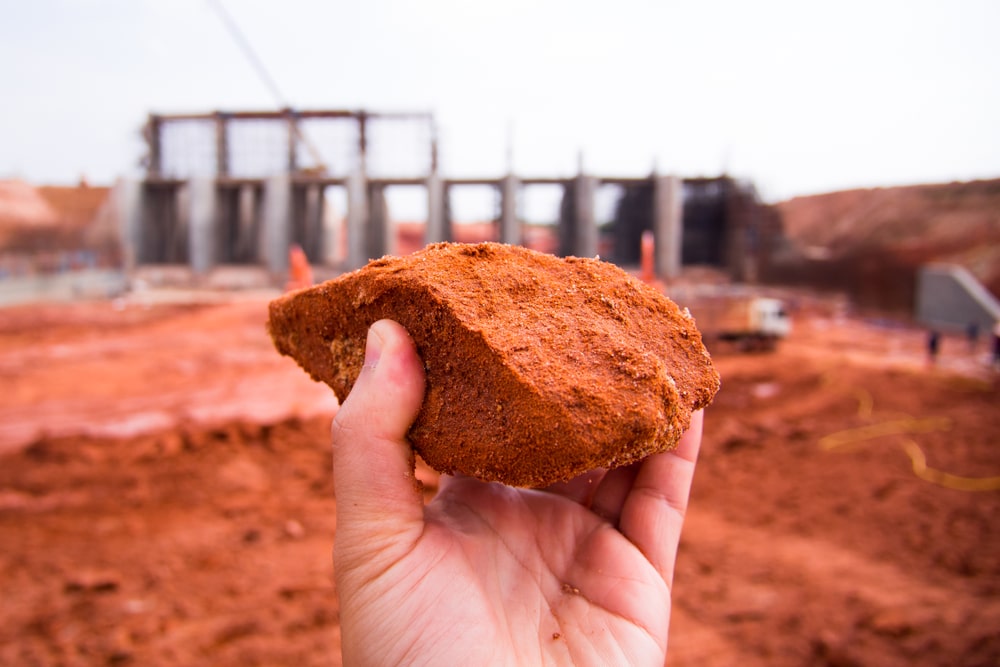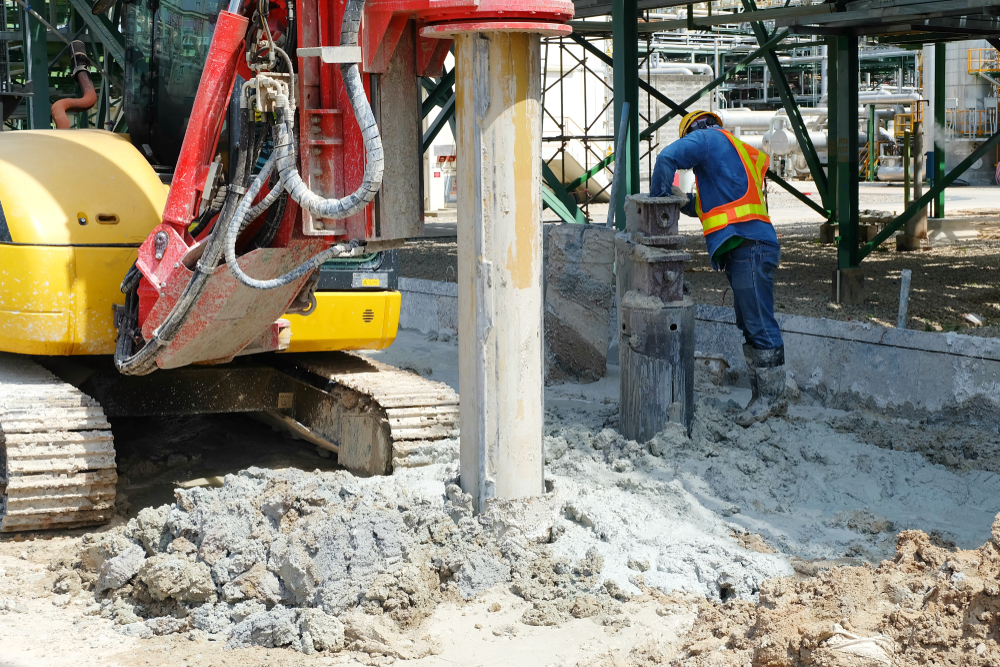Geotechnical Engineer Description: What to Get out of These Specialists
Geotechnical Engineer Description: What to Get out of These Specialists
Blog Article
A Comprehensive Summary of Geotechnical Engineering Techniques and Their Effect On Modern Civil Engineering Projects
Geotechnical design serves as the backbone of modern civil design, providing important strategies that deal with the intricacies of subsurface conditions. The interplay of soil evaluation, foundation design, and ingenious technologies shapes the integrity and sustainability of infrastructure jobs. As we explore these methodologies, it becomes clear just how vital they remain in mitigating prospective dangers connected with construction. The effects of these techniques extend beyond plain safety; they likewise affect task efficiency and ecological considerations, raising important questions about future improvements in the area. What continues to be to be uncovered is the transformative capacity of these innovations on urban growth.
Importance of Geotechnical Engineering
Geotechnical engineering offers as a crucial foundation for civil design tasks, influencing the security and stability of structures. This discipline concentrates on the behavior of soil and rock products, offering crucial understandings that assist the layout and building processes. By recognizing the communication in between the earth and engineered frameworks, geotechnical designers can examine dangers connected with ground conditions, such as negotiation, incline stability, and liquefaction.
The relevance of geotechnical design prolongs beyond mere architectural stability; it plays an important role in environmental management and sustainability. Properly implemented geotechnical assessments make sure that jobs lessen their ecological footprint and follow regulative demands (geotechnical engineer description). Geotechnical design is crucial in site selection, making it possible for designers to determine appropriate locations for construction that alleviate possible hazards.
On top of that, geotechnical design promotes innovation in civil engineering by progressing strategies for ground improvement, foundation design, and excavation. The discipline's contributions are essential in resolving challenges posed by varying soil conditions, thus facilitating risk-free and reliable facilities development. Overall, the value of geotechnical engineering is vital in making sure that civil design tasks are not only possible however likewise resistant against manufactured and natural misfortunes.
Key Methods in Geotechnical Design

An additional important method is soil stablizing, which includes modifying soil buildings to enhance load-bearing capability or lower negotiation. Methods such as adding cement, lime, or using geosynthetics are frequently made use of to achieve dirt enhancement.
Ground enhancement strategies, including vibrant compaction and vibro-replacement, are additionally crucial. These techniques intend to compress loose or soft soils, improving their stamina and reducing liquefaction possibility in seismic areas.
Maintaining structures, such as sheet piles and soil nailing, are utilized to sustain excavations and prevent dirt activity. Incline stablizing strategies, including drainage systems and maintaining walls, are important for mitigating landslide risks.

Dirt Analysis and Checking Methods
Efficient dirt analysis and screening techniques are essential for understanding the physical and chemical residential properties of dirt, which directly affect design decisions. A detailed assessment of soil attributes is essential for predicting behavior under numerous loading conditions and environmental impacts.
Typical soil testing methods include both area and research laboratory methods. Area tests, such as the Requirement Infiltration Examination (SPT) and Cone Infiltration Test (CPT), give instant understandings right into dirt thickness, stratification, and stamina. These tests assist engineers analyze site conditions effectively before even more substantial research laboratory evaluations.
Research laboratory screening approaches, such as Atterberg restrictions, grain dimension circulation, and compaction examinations, are vital for figuring out soil plasticity, wetness web content, and optimum compaction levels. Advanced methods like triaxial tests and consolidated undrained (CU) tests offer useful data on shear strength and effective stress specifications.
Chemical screening, consisting of pH, electrical conductivity, and natural material analysis, is additionally important for recognizing prospective dirt contamination and its influence on building products. Collectively, these soil evaluation and screening methods create the foundation of educated decision-making in geotechnical design, guaranteeing the safety and security of modern-day civil engineering tasks.
Foundation Design Approaches
Structure design approaches are important in ensuring the security and longevity of frameworks. These strategies can be classified right into deep and superficial foundations, each fit to particular soil conditions and filling circumstances. Superficial foundations, such as spread footings and mat foundations, are typically utilized when surface area dirts have ample bearing ability. They disperse the lots over a larger location, lessening settlement dangers.
On the other hand, deep foundations, consisting of stacks and pierced shafts, are used when surface area soils are weak or poor for supporting the framework. These structures transfer loads to deeper, much more stable soil or rock layers, making them vital for skyscrapers and bridges in tough geotechnical conditions.
Choosing the proper structure design entails complete geotechnical examinations, including soil structure, bearing capacity, and groundwater conditions. Engineers should think about factors such as settlement, lateral tons, and prospective seismic activity to guarantee the foundation's performance over time.
Eventually, a well-executed structure design is an essential facet of civil design, straight influencing check this site out the safety, longevity, and functionality of frameworks. geotechnical engineer description. By lining up structure kinds with site-specific conditions, designers can efficiently minimize risks connected with structure failure
Technologies Forming Civil Engineering

Sustainable materials, such as high-performance concrete and recycled accumulations, are also obtaining traction, promoting eco-friendly techniques while keeping architectural honesty. Furthermore, advanced geotechnical strategies, such as ground enhancement and deep blending techniques, are improving the stability of structures in challenging dirt problems.
In addition, making use of drones and remote picking up modern technology is boosting site evaluating and checking, providing real-time information that help in taking care of building and construction progression and security. The execution of innovative building techniques, such as modular and prefabricated building, even more speeds up project timelines and minimizes waste. Jointly, these innovations are not just changing civil engineering methods however likewise making certain that contemporary facilities fulfills the demands of a growing worldwide population while addressing ecological issues.
Final Thought
To conclude, geotechnical engineering methods are integral to the success of contemporary civil engineering jobs. The application of site examination, dirt stablizing, and ground enhancement methodologies ensures the safety and security and stability of facilities. Innovations such as Building Details Modeling (BIM) and advanced monitoring innovations even more improve project effectiveness and accuracy. By utilizing these techniques, designers can reduce risks and add to the advancement of resistant city atmospheres, inevitably promoting lasting development and security in civil design techniques.
Geotechnical engineering serves as the backbone of contemporary civil engineering, giving crucial methods that resolve the intricacies of subsurface conditions.Geotechnical design serves as an essential foundation for civil engineering projects, affecting the safety and security of frameworks.In enhancement, geotechnical design fosters technology in civil design by progressing methods for ground renovation, structure style, and excavation. On the whole, the relevance of geotechnical design is critical in he has a good point making certain that civil engineering jobs are not only practical but also resistant versus man-made and natural hardships.
In verdict, geotechnical engineering techniques are important to the read here success of contemporary civil engineering tasks.
Report this page